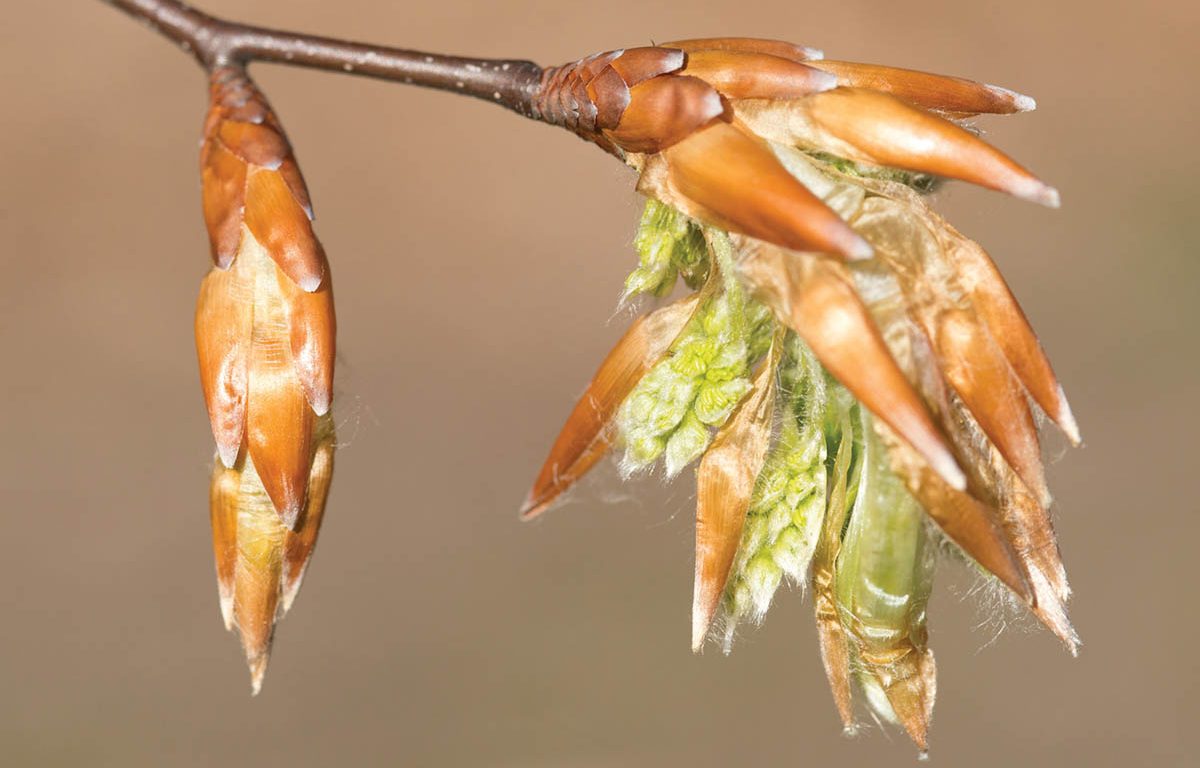
Beech buds opening
By Laura & Hal Mahan
Governor Roy Cooper’s Stay At Home order has caused all of us to approach life in a different way and make adjustments to cope. Some days are harder than others. As retail store owners, we always felt that push-pull of enjoying our customers and daily social interactions versus longing for some relief in being tied to the business. And then came COVID-19.
As naturalists, we are always learning, always observing. Our observations had to be scaled down to the homefront as most of the parks and trails closed.
Laura has always wanted to create a native plant garden, and we decided that this would be the perfect time. We have been closely involved in the movement to encourage folks to landscape with native plants instead of exotics, following the advice in the popular book, Bringing Nature Home:
How You Can Sustain Wildlife with Native Plants by Doug Tallamy. He notes that “nearly all terrestrial birds feed their young on insects, not seeds or berries.” This baby bird food mostly takes the form of caterpillars. And knowing this, we also know that most caterpillars are specific about the species of plants they will eat due to thousands of years of co-evolving with native vegetation. Hence, if you bring in plants that are exotics, originating in Asia or Europe for instance, our insects here might not readily eat them. No caterpillars means no baby birds. So a simple solution to this is to plant a good number of native plant species, especially trees and shrubs.
The Mahan COVID garden began with a small “empty” space created during a major driveway reconstruction project at their home in Chunns Cove. Laura began to research what shrubs and trees might be a good fit for the space, and then what the availability was. The space called for one tree that would become a large shade tree and would need a fair amount of space. We wanted a white oak, but it seemed that they were difficult to find. A close relative in the oak family is the American beech. Perfect! Laura has always loved the wonderful, slender winter buds of the beech. It is one of the last trees in the forest to leaf out, and one of the last to lose its leaves in the fall. We planted the beech tree on April 6, and by Mother’s Day on May 10, the buds were just starting to open!
The beech is a decidedly slow-growing tree. It will be many years before our little tree provides much shade, but it will be a pleasure to watch it develop. We are smiling now as we read the paragraph in Bringing Nature Home about the American beech: “…. it supports over 100 species of Lepidoptera [butterflies and moths]. On a per-species basis, this makes beech more productive in its support of wildlife than even the number-one-ranked oaks.”
Hopefully our beech tree will live a long healthy life. We will try somehow to leave a time capsule somewhere in our home so that future owners know that this American beech was planted on April 6, 2020, during the time of the COVID-19 pandemic.
Laura and Hal Mahan are owners of The Compleat Naturalist, located at 2 Brook Street in the Historic Biltmore Village. To learn more or to shop online, visit CompleatNaturalist.com or call 828.274.5430.






